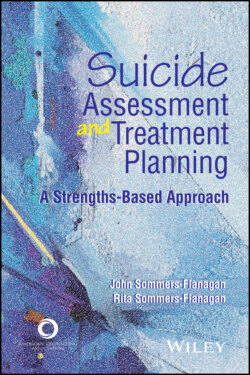Читать книгу Suicide Assessment and Treatment Planning - John Sommers-Flanagan - Страница 47
Competency 5: Determine the Level of Risk
ОглавлениеAs discussed previously, accurately determining client suicide risk is probably impossible. Nevertheless, there are situations and contexts in which employment responsibilities will require you to make your best estimate of client suicide risk. However, because your specific suicide predictions may be incorrect, avoiding over-confidence, consulting with others, and collaborating with clients is recommended.
Sometimes so-called high-risk clients (based on traditional risk and protective factors) can be managed using a detailed safety plan and close in-home monitoring. Historically, these clients were hospitalized—often involuntarily. Although sometimes it is the only option, hospitalization is not an especially effective treatment for suicide, and the period after hospitalization is a time of heightened suicide risk (Large & Kapur, 2018).
Tasks associated with this competency include the following:
1 Recognize that because your ability to accurately categorize risk is limited, no matter the risk level, you should collaboratively establish a treatment plan to maximize client safety. This will likely involve safety or crisis planning (Bryan & Rudd, 2018; Stanley & Brown, 2012).
2 Expand your knowledge of the client (Granello, 2010b). Obtain previous medical/mental health records as well as collateral information from friends, family, or other supportive contacts (Wheeler & Bertram, 2019). This will require client consent; in some circumstances, you may need to breach confidentiality (e.g., when clients are suicidal and refuse treatment, when you have a duty to warn family about elevated risk, or when youth have suicidal ideation or make suicide gestures).
3 When clients will not collaborate on safety planning, or when you are setting mandates, categorize risk using “phraseology such as low, moderate, high, and extreme risk” (Cramer et al., 2013, p. 7). Most experts advise against using a no-risk category.
